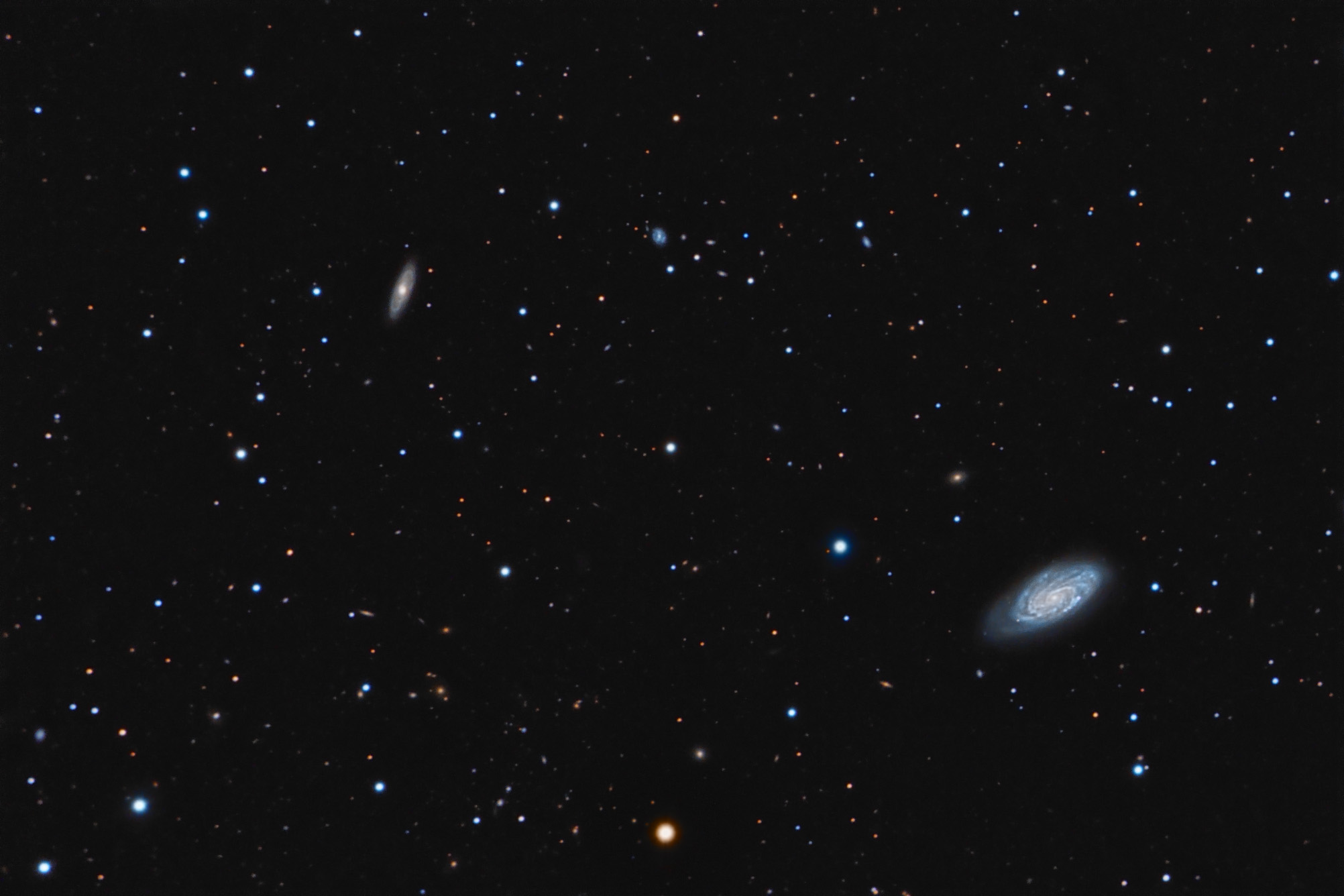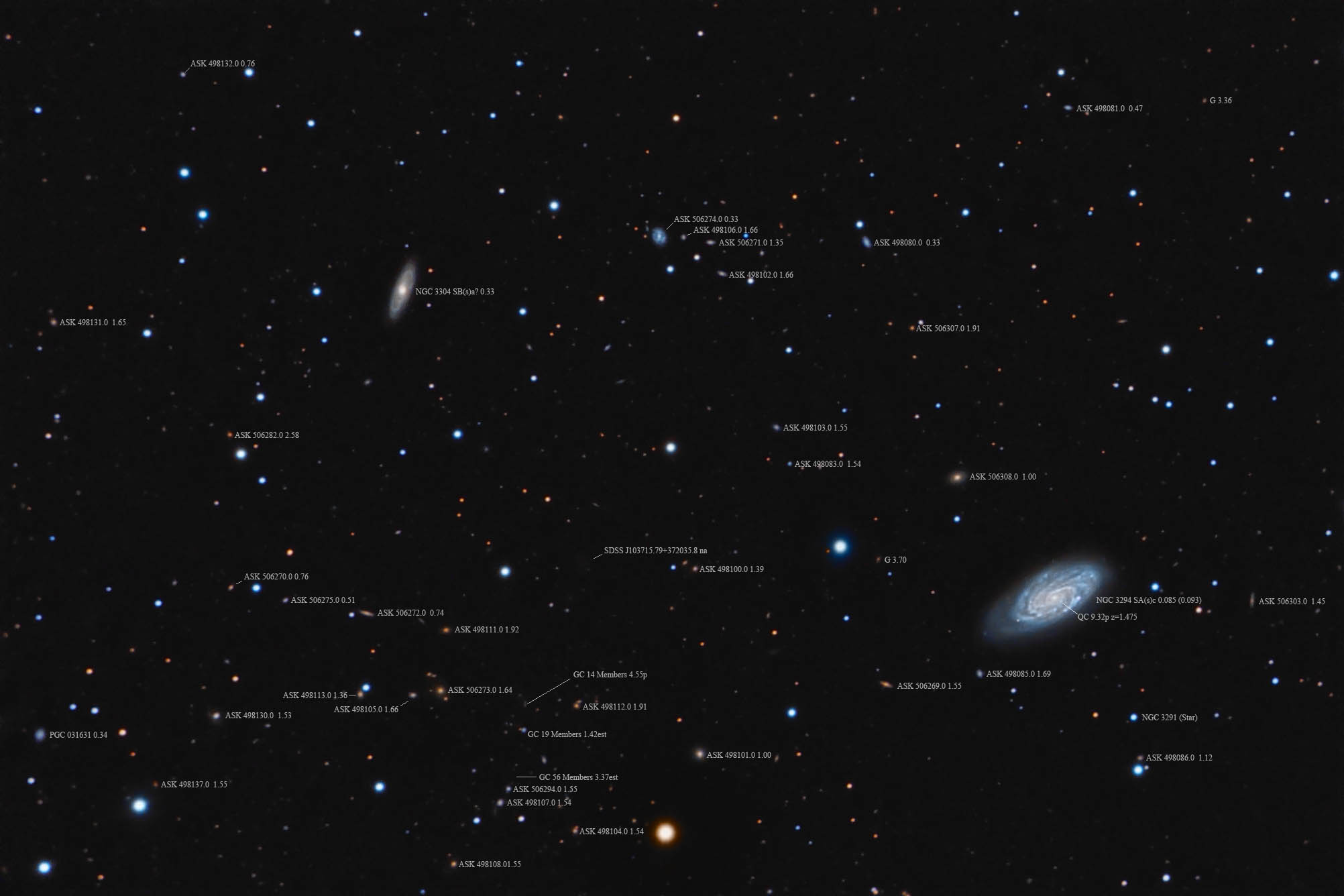| Description | Images |
Object name: NGC3294Designation(s): NGC3294, NGC3304, NGC3291, There are three NGC objects in the image located in northeastern Leo Minor. NGC 3294 was my main target as a rather photogenic spiral galaxy that is in the original Herschel 400 list having been discovered by William Herschel on March 17, 1787. It is 85 million light-years distant by redshift and 93 million light-years by the median of many mostly Tully Fisher measurements. The other NGC galaxy is NGC 3304 also discovered by William Herschel the same night as he found NGC 3294. It is nearly 3 times as distant at 330 million light-years by redshift. The third NGC object is NGC 3291. It was discovered by Guillaume Bigourdan nearly 100 years later on April 5, 1885. The reason Herschel didn't "find" it is it is just a field star. Even Bigourdan couldn't find it when he tried to verify it a few nights later. On a poor night, a star at the magnitude limit of the scope can look like a fuzzy galaxy and fool even a rather expert observer. His position was precisely on the star so why he didn't scratch it when he couldn't verify it I don't know but the NGC is littered with such stellar finds. Related Designation(s):2MASS J10360648+3716280, 2MASS J10361627+3719289, 2MASS J10373789+3727204, 2MASX J10361626+3719285, 2MASX J10373786+3727204, 2MASXi J1037379+372720, 7C 1033+3735, AKARI J1036162+371932, ASK 498088.0, ASK 506279.0, B3 1033+375, CGCG 1033.3+3735, CGCG 1034.7+3743, CGCG 183-030, CGCG 183-032, CGCG 184-001, ECO 09250, FIRST J103737.9+372720, GALEXASC J103606.49+371628.4 , GALEXASC J103737.82+372722.4 , GALEXMSC J103606.50+371628.2 , GALEXMSC J103737.94+372720.8 , HOLM 202A, HOLM 202B, IRAS 10333+3734, IRAS F10333+3735, IRAS F10347+3742, KUG 1033+375, LDCE 0750 NED001, MAPS-NGP O_263_0050572, MCG +06-23-021, MCG +06-23-026, NGC 3291, NGC 3294, NGC 3304, NGC3291, NGC3294, NGC3304, NPM1G +37.0276, NSA 158541, NSA 158565, NVSS J103616+371924, NVSS J103738+372714, PGC 031428, PGC 031572, SDSS J103606.48+371627.8, SDSS J103616.24+371928.8, SDSS J103616.25+371928.8, SDSS J103616.25+371928.9, SDSS J103737.91+372720.2, SDSS J103737.91+372720.3, UGC 05753, UGC 05777, UNAM-KIAS 0514, UZC J103616.4+371929, UZC J103738.0+372721, [BEC2010] HRS 013, [M98j] 091 NED01, [PJY2015] 587738947748757598 , [TTL2012] 498721, | Permanent link: https://images.mantrapskies.com/catalog/NGC/NGC3294-NGC3304-NGC3291/NGC3294L4X10RGB2X10.JPG |


